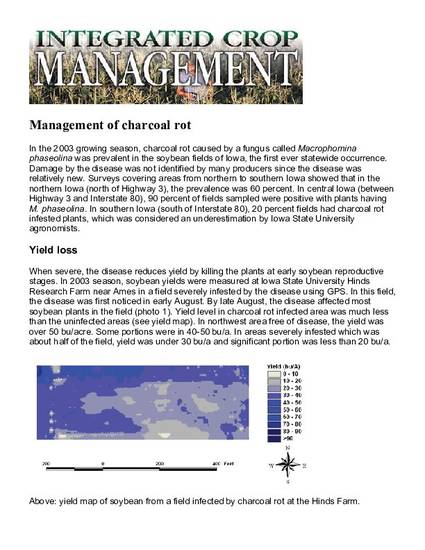
Article
Management of charcoal rot
Integrated Crop Management News
Document Type
Article
Publication Date
1-26-2004
Disciplines
Abstract
In the 2003 growing season, charcoal rot caused by a fungus called Macrophomina phaseolina was prevalent in the soybean fields of Iowa, the first ever statewide occurrence. Damage by the disease was not identified by many producers since the disease was relatively new. Surveys covering areas from northern to southern Iowa showed that in the northern Iowa (north of Highway 3), the prevalence was 60 percent. In central Iowa (between Highway 3 and Interstate 80), 90 percent of fields sampled were positive with plants having M. phaseolina. In southern Iowa (south of Interstate 80), 20 percent fields had charcoal rot infested plants, which was considered an underestimation by Iowa State University agronomists.
Copyright Owner
Iowa State University
Copyright Date
2004
Language
en
File Format
application/pdf
Citation Information
X. B. Yang, John M. Shriver and Shrishail S. Navi. "Management of charcoal rot" (2004) Available at: http://works.bepress.com/shrishail_navi/54/
